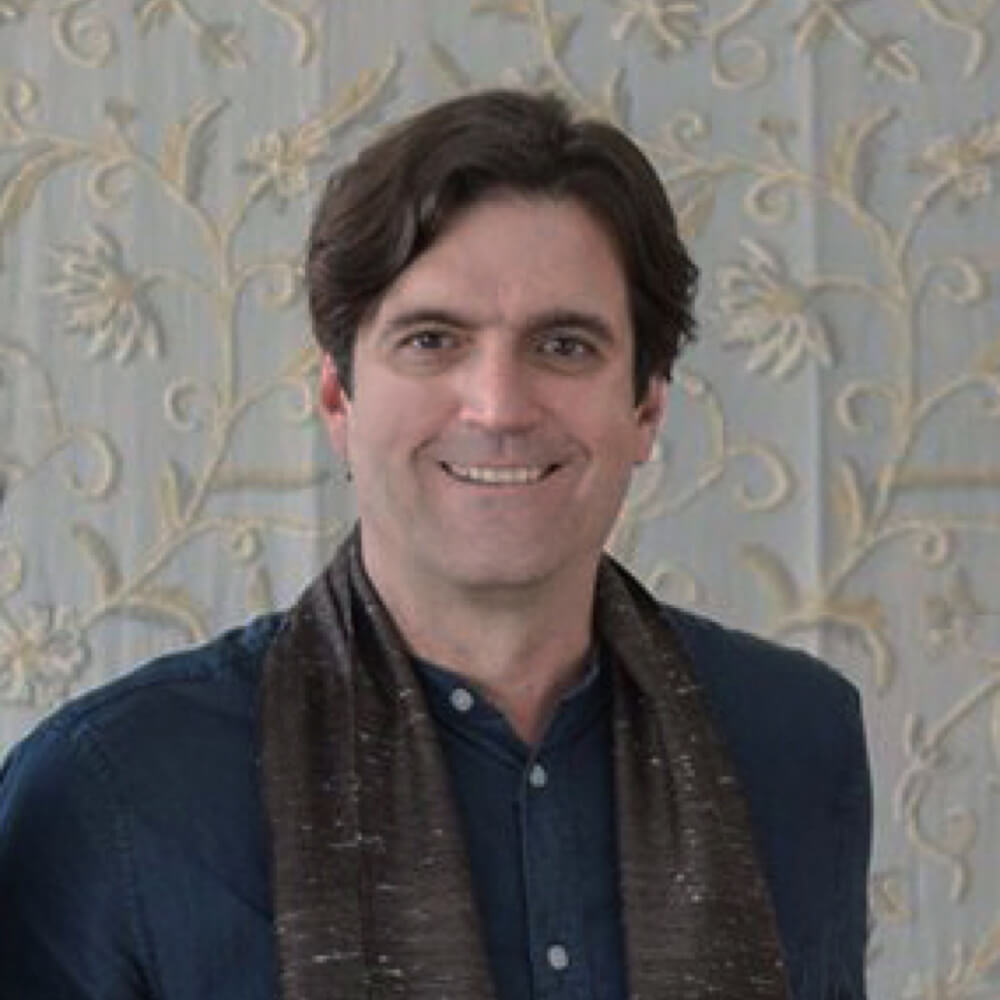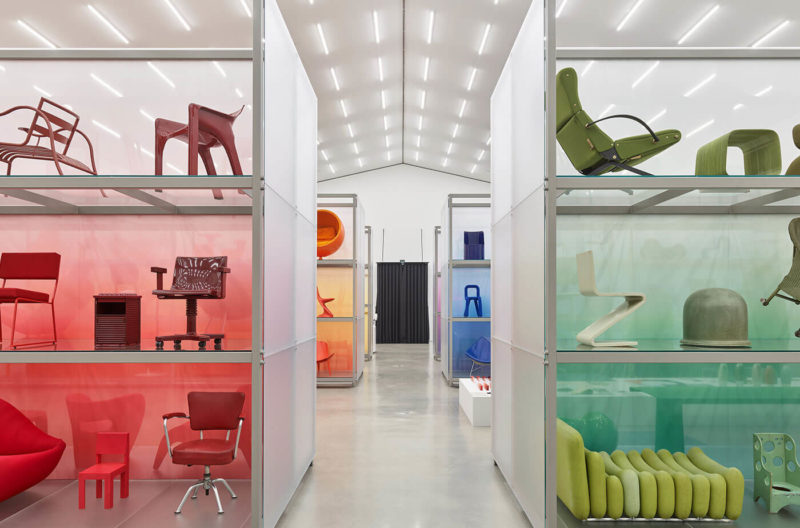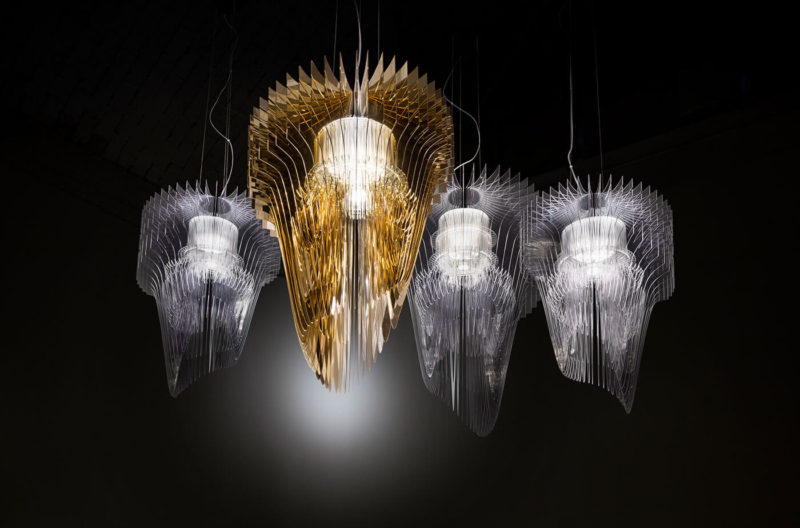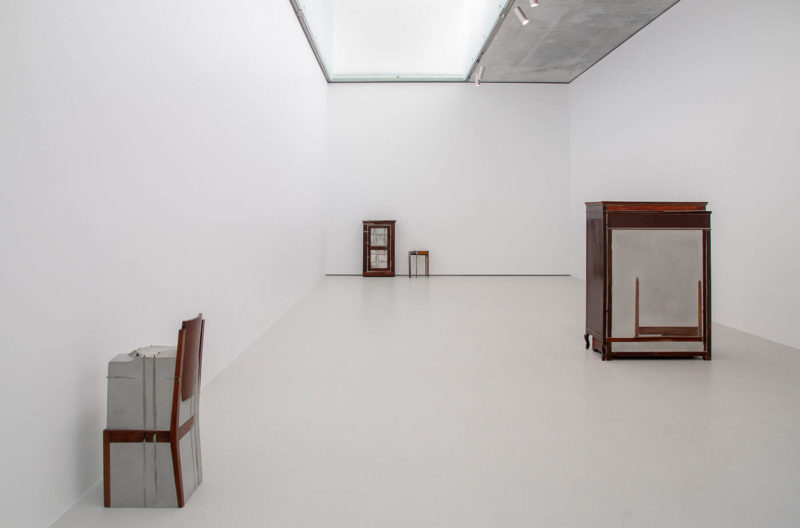Robert Wilson
“A chair is for me like sculpture, I like to look at it in space and to see it from different sides. I do not see chairs as having any function other than that.”
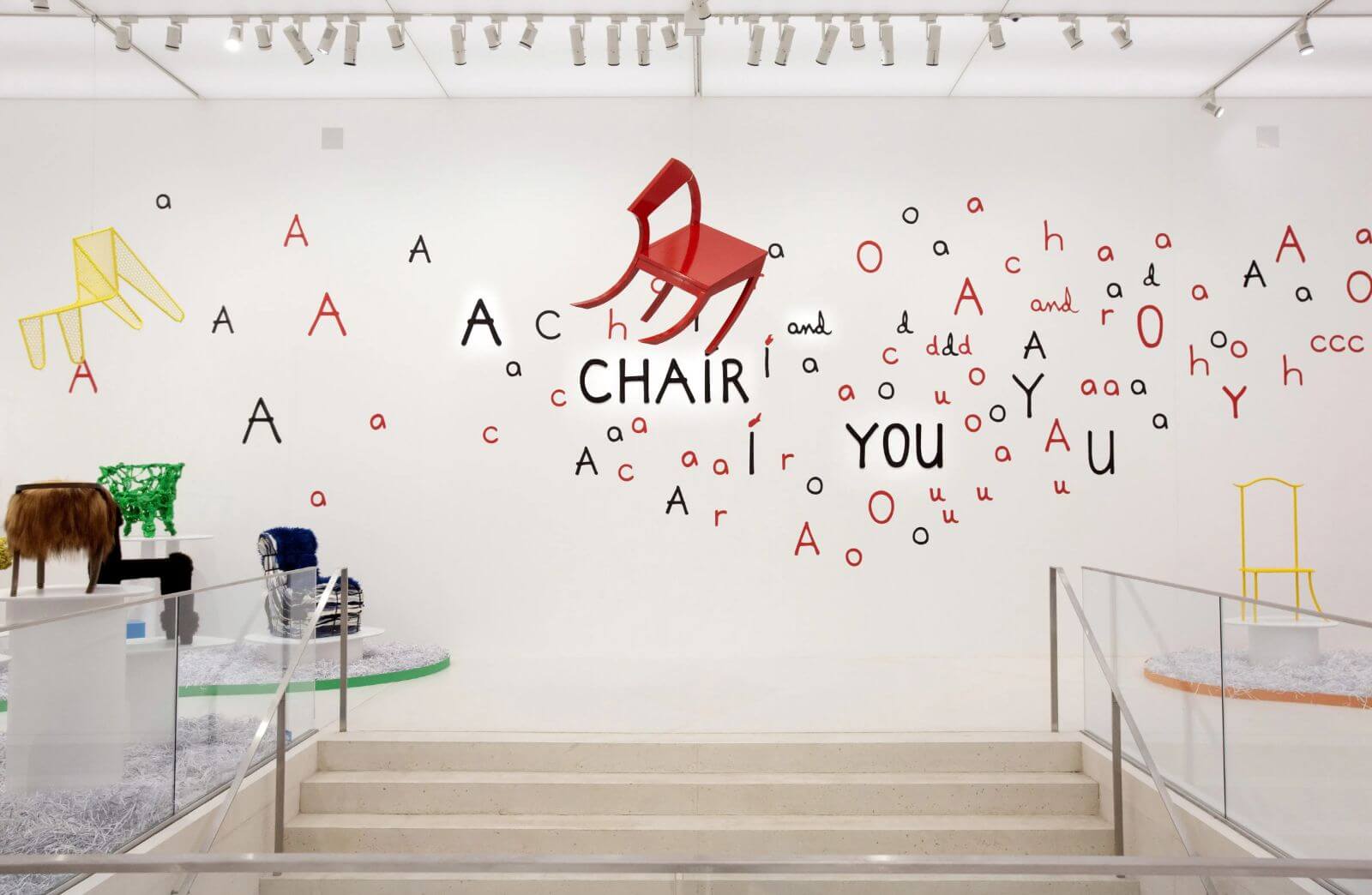
Exhibition view, ‘A Chair and You’ at mudac
COURTESY: mudac / PHOTOGRAPH: © Lucie Jansch
INSPIRED BY THE creativity of designers such as Tom Dixon and Ron Arad, Swiss business entrepreneur and art collector Thierry Barbier-Mueller started collecting limited-edition chairs in the 1990s. Two decades later, his chair collection is one of the largest in the world, with over 650 pieces.
Focusing on designs from the 1960s onwards, the collection features not just stand-out designers, but also includes chairs by artists like Donald Judd, Niki de Saint Phalle, and Lawrence Weiner – as well as architects such as Daniel Libeskind and Frank Gehry.
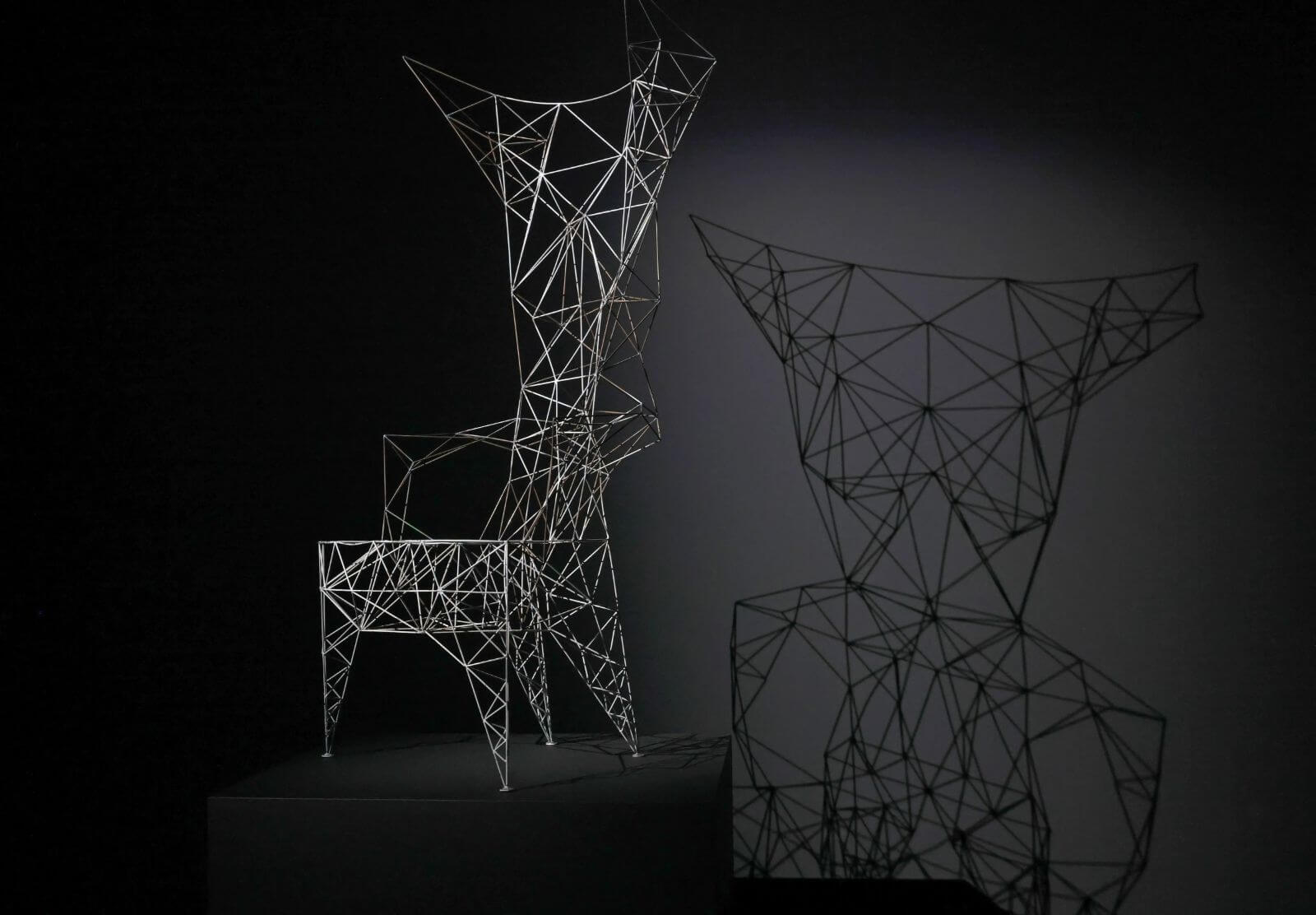
Tom Dixon, ‘Pylon Chair’, 1992, in the exhibition ‘A Chair and You’ at mudac
COURTESY: mudac / PHOTOGRAPH: © Lucie Jansch
Now for the first time, part of the collection (211 chairs) will be on view in the exhibition ‘A Chair and You’ at the Museum of Contemporary Design and Applied Arts (mudac), Lausanne. Located in its brand new building (designed by Aires Mateus) within the new cultural district Plateforme 10, this will be mudac’s first major exhibition since it moved last summer.
Renowned theatre director Robert Wilson was called upon to stage the exhibition, which shows a diverse and eclectic mix of the Barbier-Mueller collection. A true visionary and renaissance man – an architect by training, a theatre director, visual artist and designer scenographer – Wilson was charged with creating an engaging narrative using the collection within the surrounds of the vast, open gallery spaces of the new building.
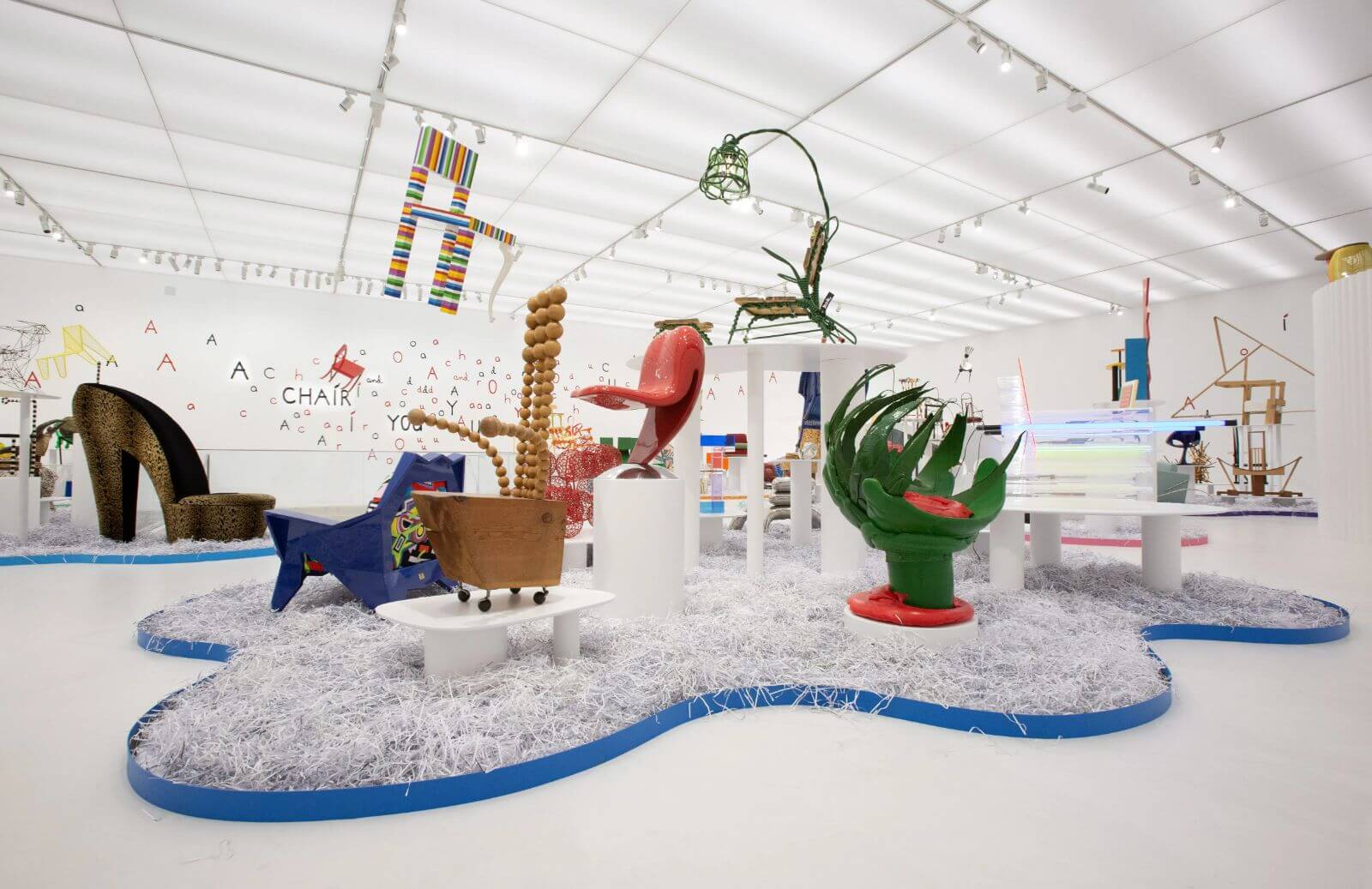
Exhibition view, ‘A Chair and You’ at mudac
COURTESY: mudac / PHOTOGRAPH: © Lucie Jansch
A chair collector and designer himself (five of his designs are included in the exhibition), Wilson focused on the placement of the pieces and the relationships between them, rather than the selection itself. “I can be given anything, but [it’s in] the organisation of how it’s placed – that’s where I want to be involved,” he commented. Wilson’s focus on orchestrating a dramatic light and space flow for the exhibition tied in perfectly with the building’s unique geometry and its own interior chiaroscuro.
As the show opened, TDE’s Paul Clemence questioned Robert Wilson about his relationship to chairs, and his approach to staging this exhibition.
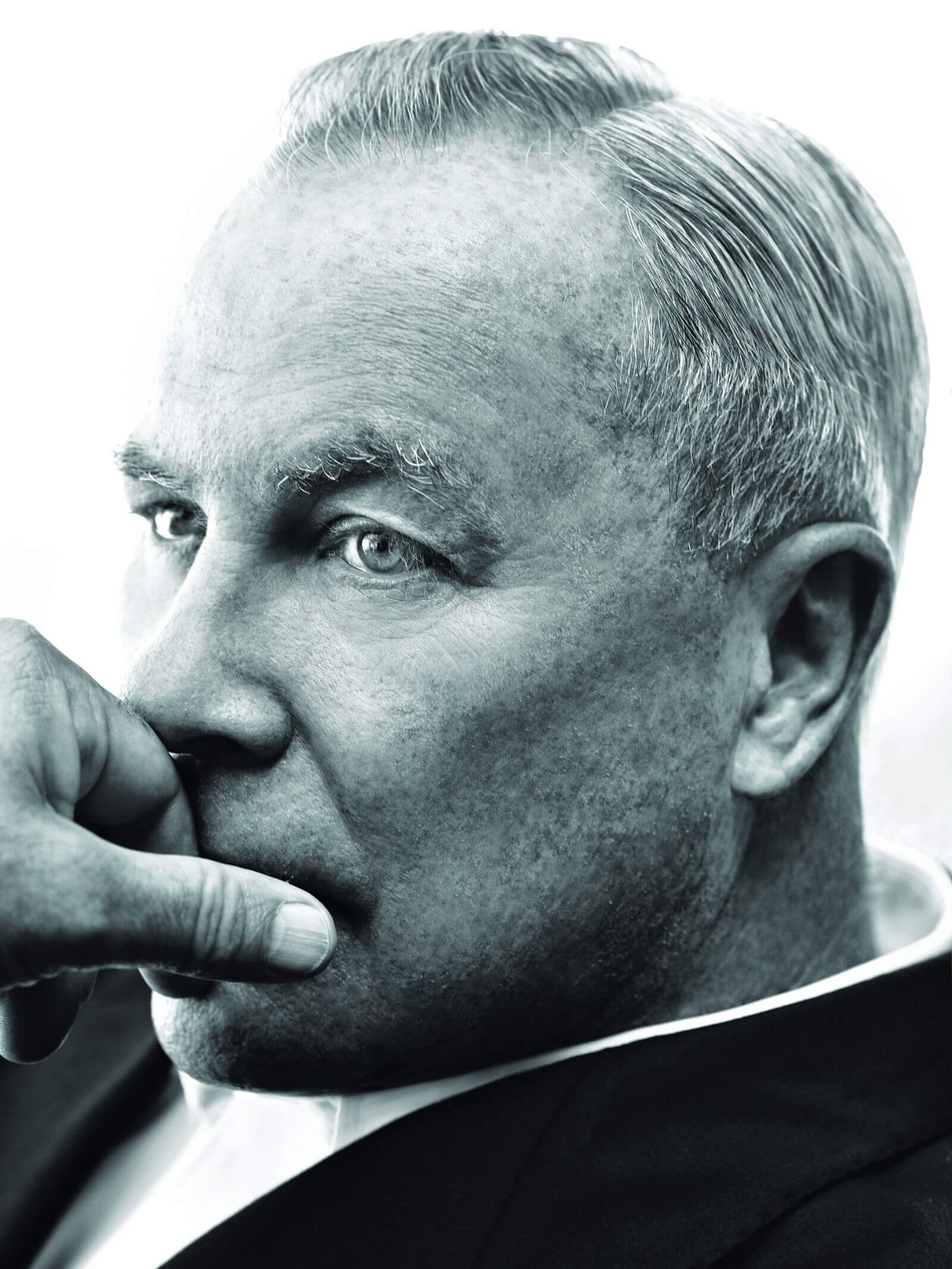
Robert Wilson
COURTESY: Robert Wilson / PHOTOGRAPH: © Yiorgos Kaplanidis
TDE: From relevant props intrinsic to your productions, to your own private collection, chairs have been an important part of your work and life. Why chairs, rather than a table, or sofa? What is it about a chair that holds such appeal for you?
Robert Wilson: Because I like to look at chairs, there is nothing more than that. When asked why she liked modern art, Gertrude Stein answered: “I like to look at it.”
TDE: You are also a collector. How did you started collecting chairs?
Robert Wilson: I started collecting flint stones when I was very young. Then, when I was about eleven years old, I received my first chair. It was a trigger to collect chairs.
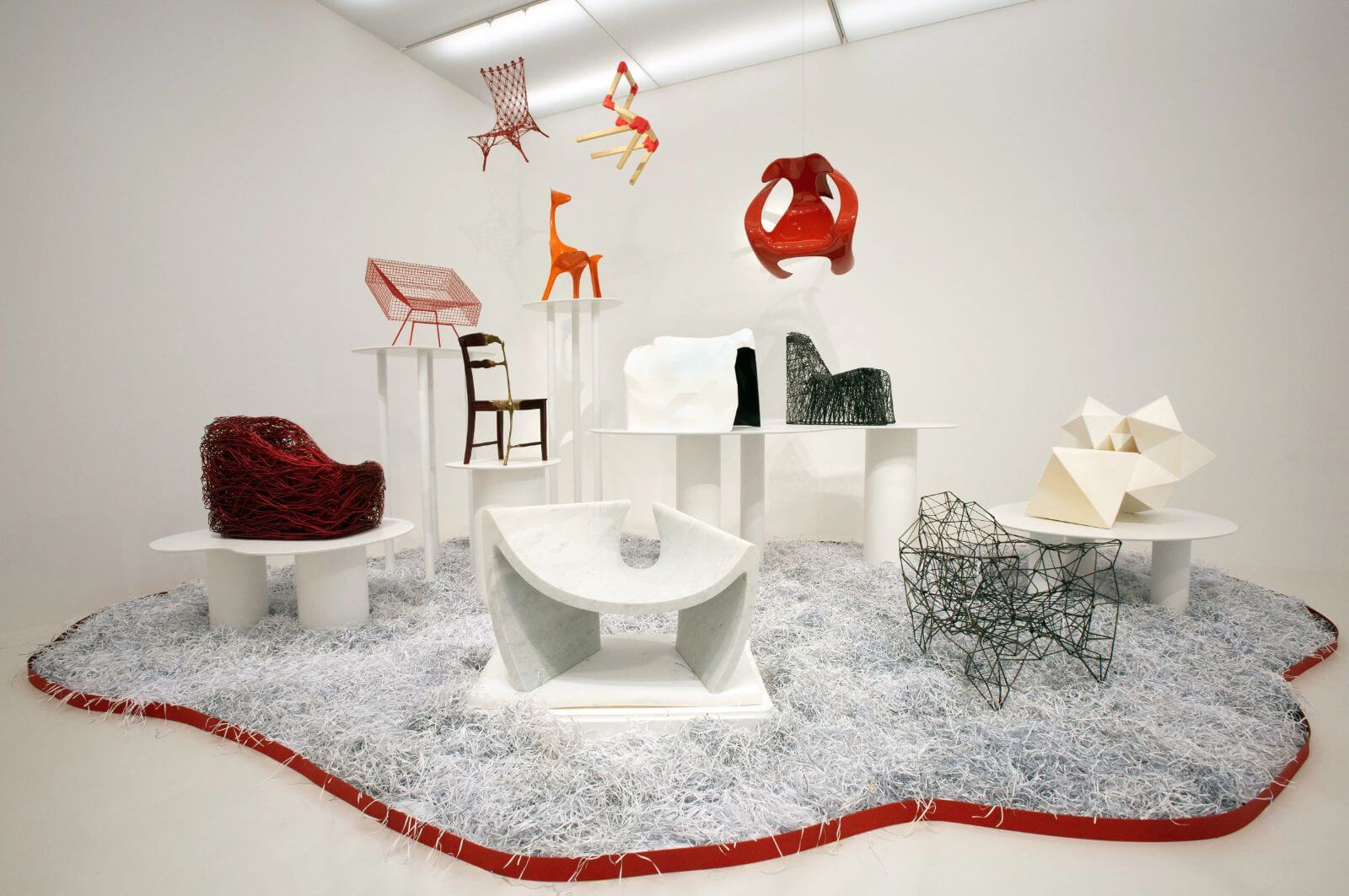
Exhibition view, ‘A Chair and You’ at mudac
COURTESY: mudac / PHOTOGRAPH: © Lucie Jansch
TDE: What are you looking for when considering a chair to include in your personal collection?
Robert Wilson: It is how a chair talks to me that draws me to it.
TDE: What are your thoughts on the relative importance of function or comfort or expression in relation to chair design?
Robert Wilson: A chair is for me like sculpture, I like to look at it in space and to see it from different sides. I do not see chairs as having any function other than that. For me, chairs have their own personalities and I have used [this characteristic] in my plays.
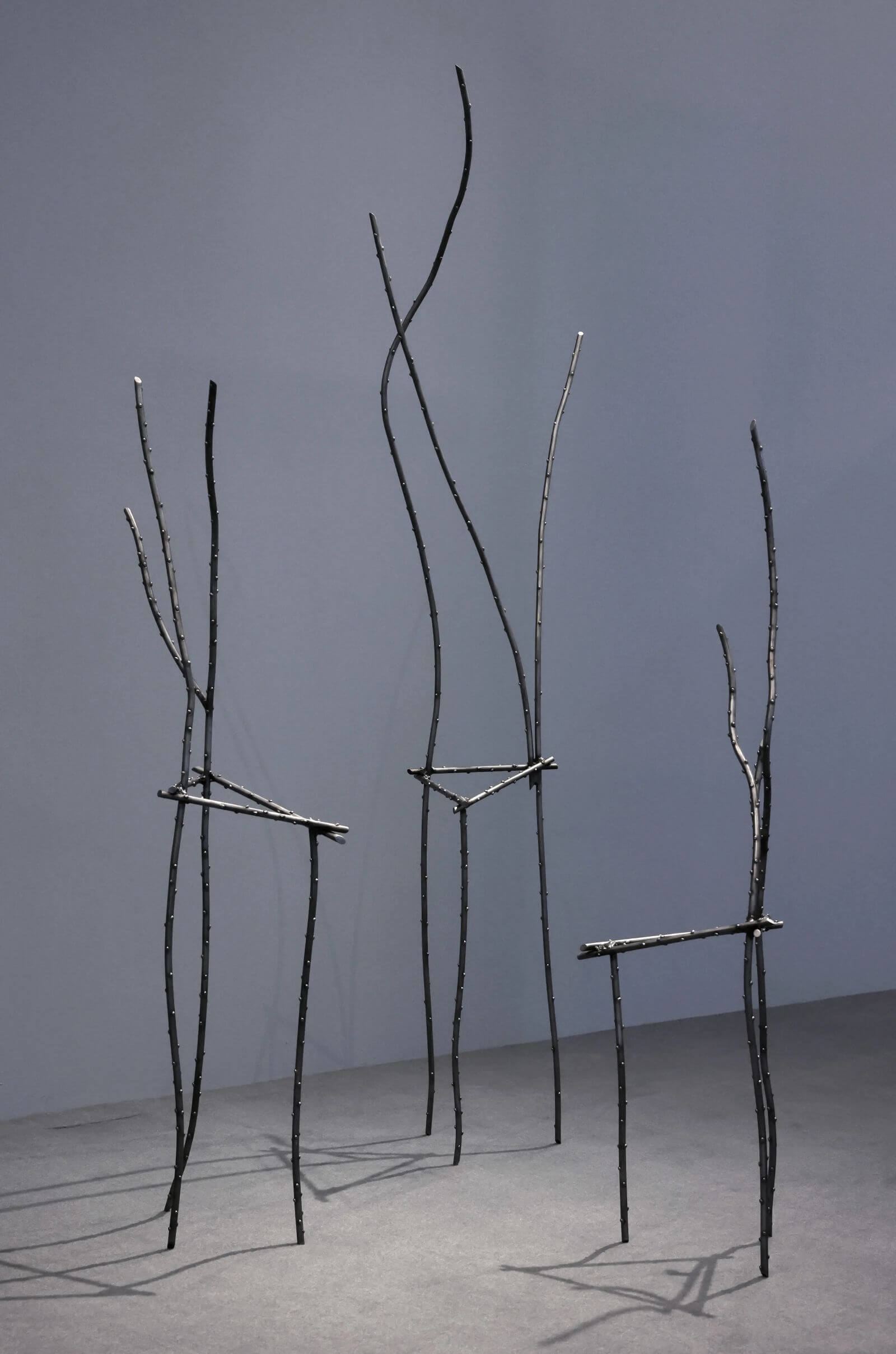
Robert Wilson, ‘Amadeus Chairs’, from The Magic Flute, 1991, in the exhibition ‘A Chair and You’ at mudac
COURTESY: mudac / PHOTOGRAPH: © Lucie Jansch
TDE: Has your background in architecture had an effect on your design appreciation? If so, how?
Robert Wilson: My background in architecture has had an influence on everything I do. I was born thinking visually and architecturally.
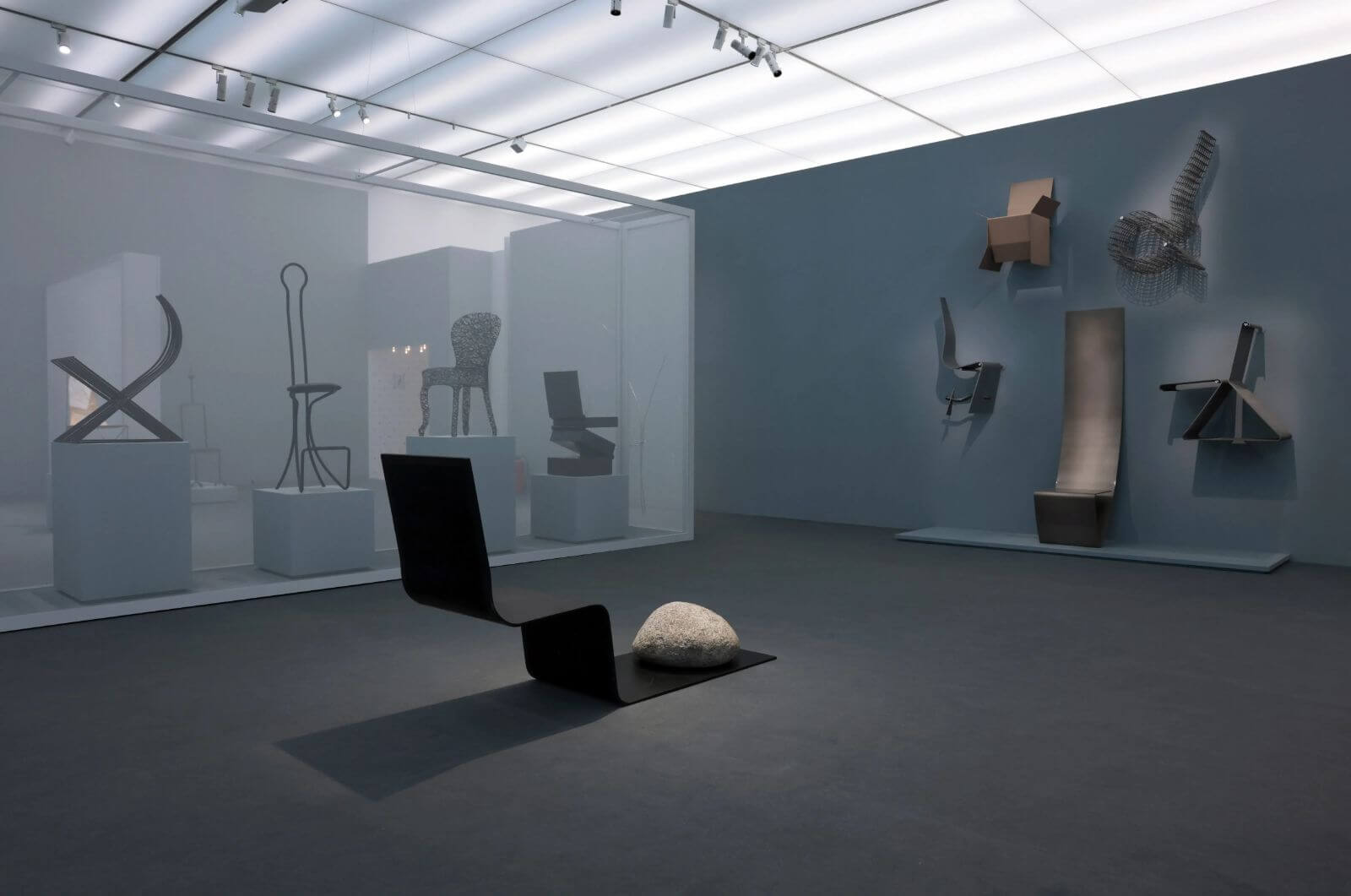
Exhibition view, ‘A Chair and You’ at mudac
COURTESY: mudac / PHOTOGRAPH: © Lucie Jansch
TDE: How did you get involved with doing the scenography for this exhibition?
Robert Wilson: It came about because Thierry Barbier-Mueller asked me. I was somewhat familiar with the collection. I knew Thierry’s parents quite well, so being asked to design an exhibition of his collection was especially meaningful to me. It was an immense pleasure to work with him and his team.
TDE: ‘A Chair and You’ brings together many design styles, concepts, stories and characters. How do you bring that out in a museum show? In terms of the staging concept, where do you start?
Robert Wilson: I started with an overall plan imagining the first thing I will see … What the light will be like and the sound. Then I wonder about the next thing I’ll see and hear, and so on until the very last. I knew I wanted to start with a very bright and colourful look and then wanted to do something a little more subdued – grey and not as bright. Then I decided that the next space would be very dark and more meditative, and the final space a surprise, being the loudest, most reflective and lightest.
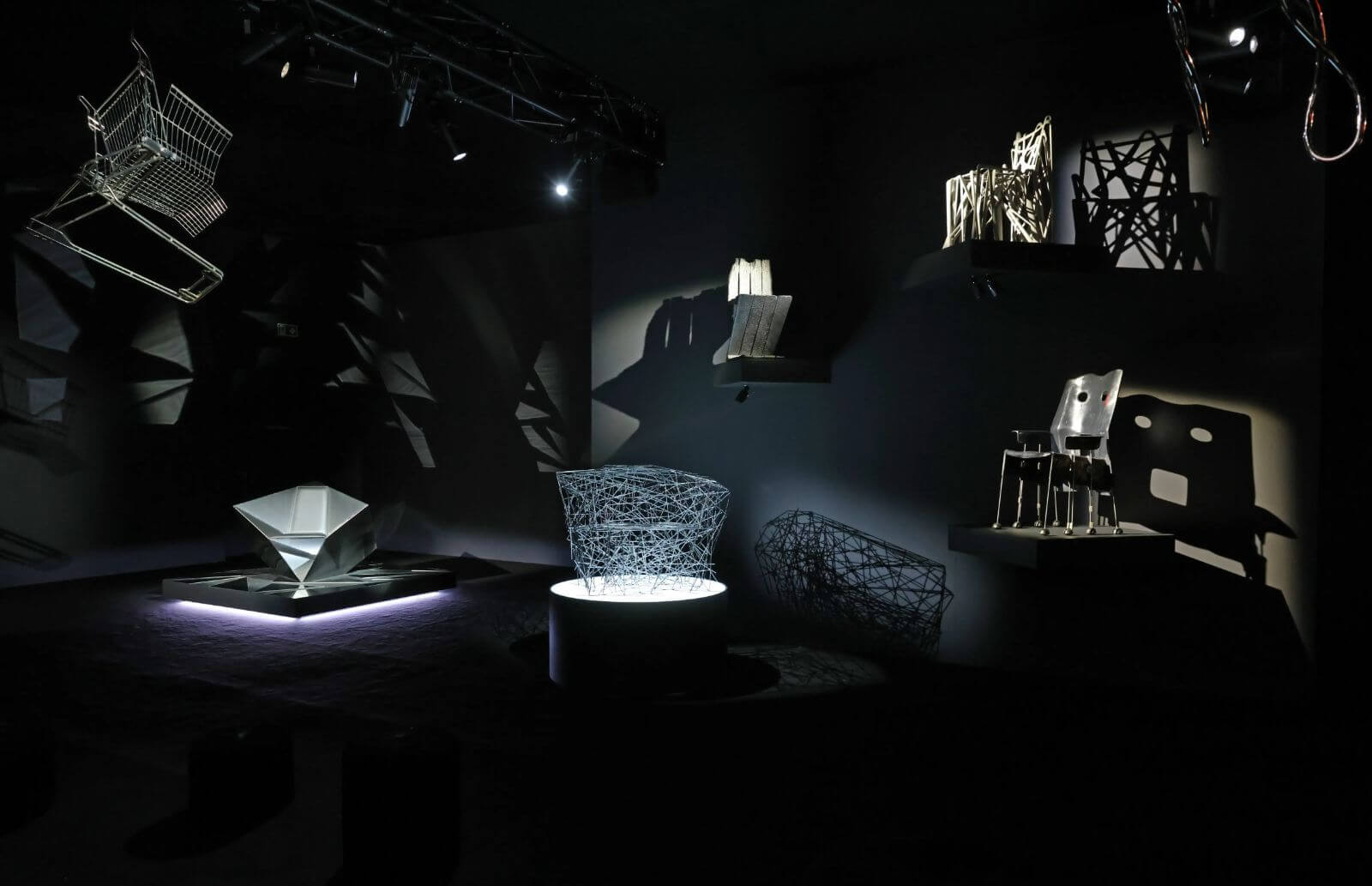
Exhibition view, ‘A Chair and You’ at mudac
COURTESY: mudac / PHOTOGRAPH: © Lucie Jansch
Once I had the overall map, architecturally, I then worked with a team of people to select what would be in each space. Others could make decisions independently from me because they were working within the larger [concept that I created]. It is like when an architect builds an apartment building and then the people can live in it and design each room to their own liking, but there’s a cohesion because the architect made a megastructure.
TDE: Lighting is very important in your work. How was the lighting conceived for this exhibition?
Robert Wilson: From the first thing I see to the last thing, the lighting is a journey. In my first year of architecture studies Louis Kahn said to me, “Students, start with light.” Light is an active participant. Light is structural, light is architectural, it helps us to hear and see. It is the most important element. Light isn’t something you do after you’ve designed an exhibition; it’s an integral part of the project.
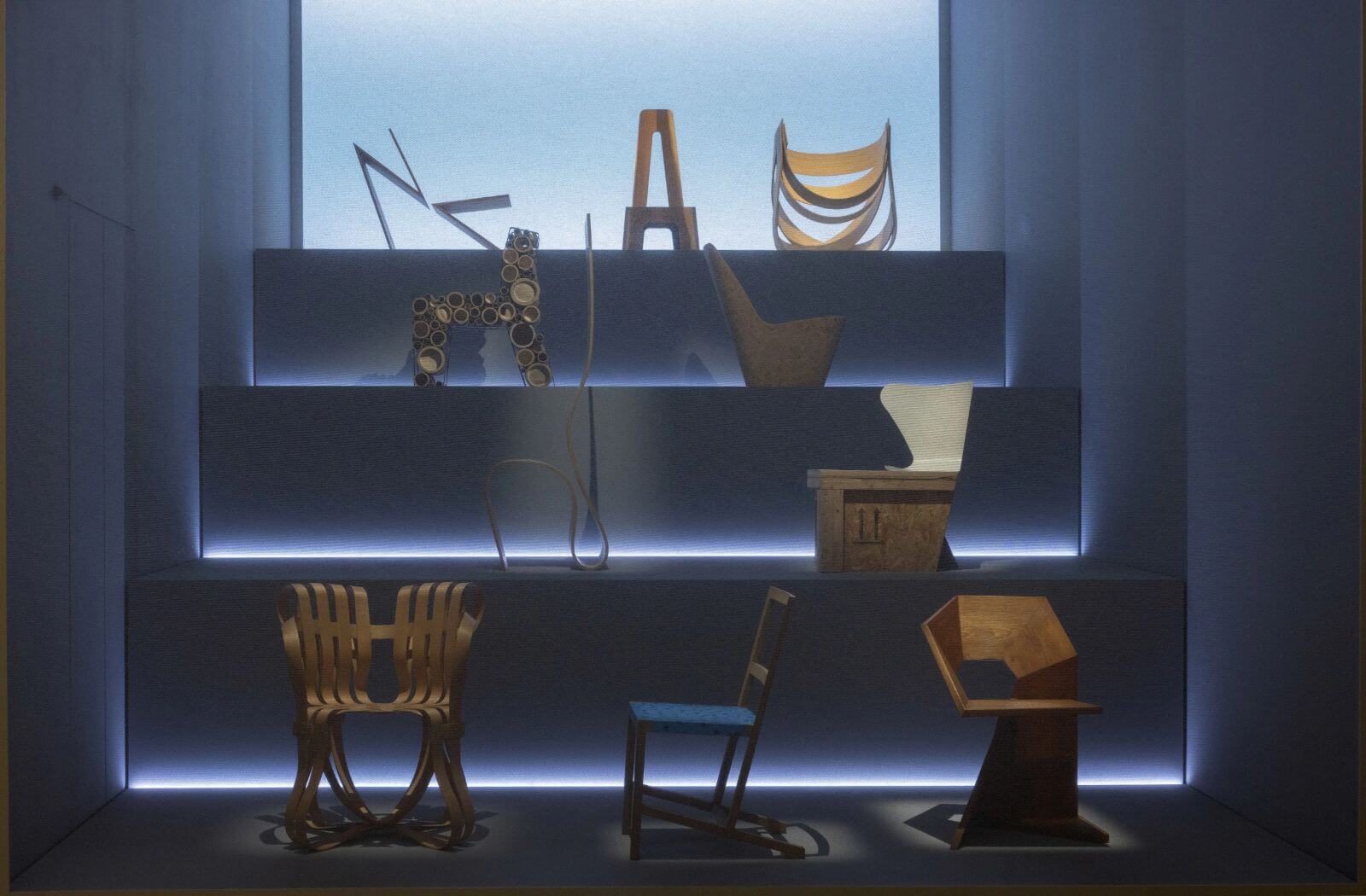
Exhibition view, ‘A Chair and You’ at mudac
COURTESY: mudac / PHOTOGRAPH: © Lucie Jansch
TDE: What are your favourite pieces from this exhibition?
Robert Wilson: I have no favourite; I like them seen together as a whole. I like to see them in counterpoint and I like to see how they are similar.
TDE: Beyond doing the exhibition scenography, you also have a few of your own chair designs included in the exhibition. How was it to see your “characters” in relation to the others?
Robert Wilson: When Thierry Barbier-Mueller acquired some pieces of my furniture, I was very pleased to have some of my work in his collection, which I admire very much. It was an honour. I am very pleased that they are in the exhibition and how different they are from one another in material, shape, line and form.
‘A Chair and You’ at mudac, Lausanne, Switzerland, runs until 26 Feb 2023.
